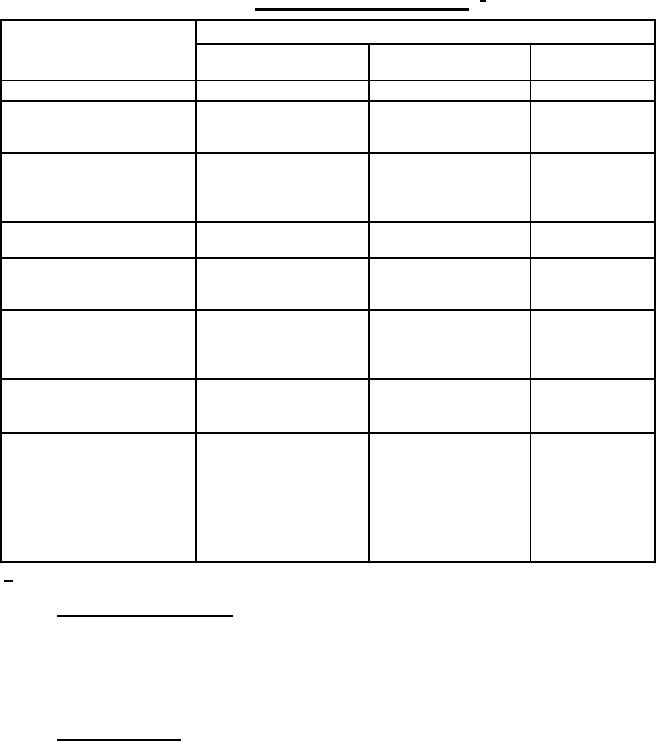
MIL-DTL-27072E
1/
TABLE XIV. Guide for selection of basic wire.
Basic wire designator (primary wire insulation)
Characteristic
A and B
D and E
P
(PVC)
(PTFE)
(PVC)
Approximate dielectric constant
3.7
2
3.7
Approximate power factor
<.0002
Change with frequency
Varies
Constant
Varies
Change with temperature
Varies
Constant
Varies
Approximate insulation
resistance
15 °C
1000 MΩ per 1000 feet
>10 MΩ per 1000 feet
6
85 °C
5 MΩ per 1000 feet
>10 MΩ per 1000 feet
6
Will ignite but is self-
Noncombustible
Will ignite but is
Flammability
extinguishing
self-extinguishing
Excellent, hot soldering
Silver-good
Solderability
Good
iron may be laid against Tin-fair
insulation with no damage
Operation temperatures for
- Sheltered cables
-60°C to +105°C
-200°C to +200°C
Stationary
-25°C to +105°C
-200°C to +200°C
Flexing
- Exposed single conductors
-60°C to +105°C
-200°C to +200°C
Stationary
-10°C to +105°C
-200°C to +200°C
Flexing
Nylon jackets are insoluble Unaffected by all solvents
in common solvents except and chemicals except
alcohols. Unattacked by
molten alkali metals
alkalis or dilute mineral
Fluid resistance
acids. Unaffected by
petroleum hydrocarbon.
Dissolve in alcohols,
phenols, and formal acid
1/ See table II for basic wire specification designators.
6.1.1.2 Wires designated D and E. Wires designated D and E should be used where reliability is of
utmost importance. Maximum conductor temperatures up to 200°C are permissible (consistent with
proper component jackets, tape and filler material, and sheath material). Wires D and E may be bent and
flexed as a single conductor at temperatures as low as 200°C (liquid nitrogen or liquid oxygen spillage).
The power factor is in the order of .0002 and the dielectric constant in the order of 2.0, thus giving
improved performance where low capacitance and low loss are necessary.
6.1.1.3 Wire designated P. Wire designated P may be used with conductor temperatures of 105°C
and any combination of ambient temperature and current so that this conductor temperature is not
exceeded. A life of approximately 3 months may be expected with conductor temperatures as high as
115ēC and a life of approximately 1 week may be expected with conductor temperatures as high as
135ēC. This type wire should not be used where it is expected that the exposed single conductor at cable
ends will be bent or flexed at temperatures below -10°C in service and installation.
18
For Parts Inquires call Parts Hangar, Inc (727) 493-0744
© Copyright 2015 Integrated Publishing, Inc.
A Service Disabled Veteran Owned Small Business